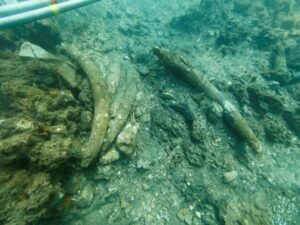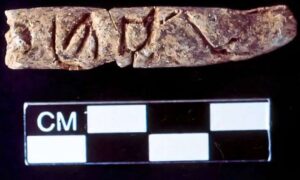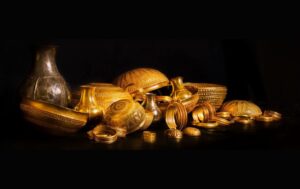Three student researchers have won three-quarters of a million dollars by using AI to decipher an ancient papyrus scroll from the town of Herculaneum, near Pompeii. The technological breakthrough could be a game changer for researchers attempting to read ancient texts.
Too delicate to read
Archaeologists unearthed over 1,000 papyrus scrolls in a ruined Roman villa in the 18th century. Historians believe Julius Caesar’s father-in-law owned the villa, whose extensive library was destroyed by the eruption of Mount Vesuvius in 79 AD.
The haul of texts, known as the Herculaneum scrolls, were invaluable, but also unopenable. Attempts to unroll the texts resulted in destroyed or badly damaged scrolls as the carbonized papyrus crumbled in researchers’ hands.
However, a small student team found an ingenious solution. Youssef Nader from Germany (or Egypt, depending on the source), Luke Farritor from the U.S., and Julian Schilliger from Switzerland trained AI to study scans of intact, rolled-up scrolls. As a result, they’ve won the Vesuvius Challenge grand prize of $700,000.
Computer scientist Brent Seales of the University of Kentucky and some Silicon Valley backers launched the Vesuvius Challenge in 2023. It offered large cash prizes for extracting text from CT scans of a few scrolls.
Seales set down a solid foundation for teams to work with. He released a machine-learning algorithm that could read the ink on the hidden layers of scrolls. The AI could spot tiny differences in the papyrus structure captured by X-ray images, potentially allowing researchers to read the scrolls without touching them. But only if you could decipher letters from the ink markings.

Text from the Herculaneum scroll. Photo: Vesuvius Challenge
Seales hoped that international teams would take his research and run with it. “We’re having a competition so we can scale up our ability to extract more and more of the text,” Seales told The Guardian early last year. “The competitors will be standing on our shoulders with all of our work in hand.”
Cooperation spurs breakthroughs
The competition moved quickly. Small breakthroughs were shared among researchers and drove a culture of cooperation and good-natured competition. A few months in, an American former physicist named Casey Handmer noticed something he called “crackle” in the scans. Crackle seemed to form the shapes of Greek letters.
Farritor expanded on Handmer’s work and won the $40,000 “first letters” prize when he identified the ancient Greek word for “purple.” Soon after, he teamed up with Schilliger and Nader to aim for the main prize.
Just before the competition deadline, the students deciphered over 2,000 Greek letters from a scroll. The scroll contains a previously unknown philosophical work about the senses and pleasure from music and food. Historians believe that they can even identify the author: Epicurean philosopher Philodemus.
“It probably is Philodemus. The style is very gnarly, typical of him, and the subject is up his alley,” Robert Fowler, chair of the Herculaneum Society, told The Guardian.
Just the beginning
The three student’s work can likely be expanded to read the rest of the Herculaneum scrolls. The 2,000 letters submitted by Farritor, Schilliger, and Nader only represent about 5% of a single scroll, so there is plenty of work to do, and plenty of new knowledge now tantalizingly close.
“In 2024, our goal is to read a few passages of text to entire scrolls, and we’re announcing a new $100,000 grand prize for the first team that can read at least 90% of all four scrolls that we have scanned,” Nat Friedman, a U.S. tech executive and founding sponsor of the Vesuvius Challenge recently wrote on X (formally Twitter).






